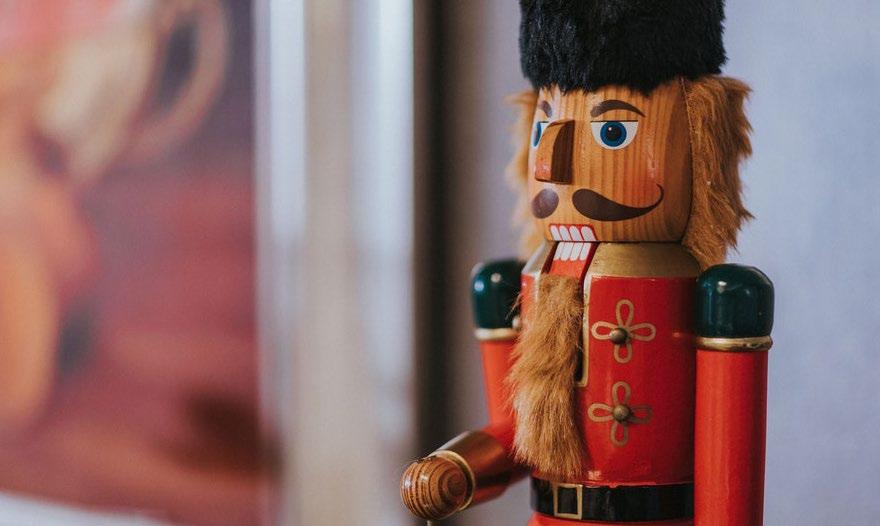
3 minute read
THE 5 TYPES OF BRAND STORIES YOU NEED TO TELL
BY GABRIELLE DOLAN
In a world where every company is screaming “buy mine!”, brand stories are what sells.
Advertisement
ONCE UPON A TIME
Growing up, I was never really into dolls, preferring to play football and cricket with my brothers. Needless to say, I never owned a Barbie and decades later, when Barbie was being shamed as not being a good role model for girls, I happily went along with this and refused to buy my two daughters a Barbie
Recently, however, I heard the backstory to Barbie and it completely changed my opinion about the Barbie Brand.
The creator of Barbie was
Ruth Handler, the wife of Mattel cofounder Elliot Handler. She noticed that when her daughter, Barbara and son Ken (and yes Ken and Barbie were named after her children) played together, they would pretend to be adults. She also noticed that while Barbara only had dolls that had her playing the role of caregiver, Ken had dolls that encouraged him to imagine himself as a doctor, firefighter or astronaut.
So, Ruth set to work to produce a three-dimensional plastic doll with an adult body and a wardrobe of fabric clothing. Her husband and other executives at Mattel did not think it was a good idea, assuming parents would be reluctant to buy their child a doll with a voluptuous figure. However, Ruth persisted and in 1959 Barbie was born.
When you look at the early years of the career Barbies created in the 60s’ and 70’s they were very progressive. For example, Executive Barbie, Astronaut Barbie and Surgeon Barbie.

Ruth is quoted as saying, “My whole philosophy of Barbie was that through the doll the little girl could be anything she wanted to be. Barbie always represented the fact that a woman has choices.”
Hearing this story changed my view of the Barbie brand and will influence my future buying decisions. I never bought my children a Barbie, but I just might buy my future grandchildren one.
That is what a magnetic story can do for your brand. They can create a connection and influence future purchasing decisions.
THE FIVE TYPES OF BRAND STORIES COMPANIES SHOULD FOCUS ON:
1. Creation stories are either why the company started or show how a product was created, e.g., the story of
Barbie’s creation. 2. Culture stories demonstrate how employees are living the company values or what those values mean to them. 5. Customer stories can showcase your customers or what your employees are doing for customers. 3. Challenge stories show how the company has responded to both internal and external challenges … big or small. 4. Community stories of how the company is fulfilling its corporate responsibility and doing good things to help the community Sometimes, a story will fall into multiple categories. For example, in 2020, Sydney-based distillery Archie Rose had to adapt their business or its 15-strong bar staff would potentially lose their jobs due to Coronavirus restrictions. That, combined with the national shortage of hand sanitiser, resulted in them making an almost immediate decision that they would switch production from spirits to hand sanitiser.
Within three days they had sourced bottles for the hand sanitisers, reconfigured their production line, created and printed labels, amended their insurance policies, and obtained additional federal production licences. Plus, they were abiding by all the legal and health requirements for the hand sanitisers and coronavirus work restrictions, to produce 7500 units in just three days! They would go on to employ another 15 local hospitality workers that had lost their jobs.
The story had an instant connection with people and immediately received local and worldwide attention. You could easily classify this story as a community story, a challenge story and a culture story. The switch to producing hand santiser could even demonstrate a creation story.
When it comes to brand storytelling, the most important thing is to not focus on one story but to consider all the different types of brand stories you can share. What’s more, you should regularly add new examples to your collection. These magnetic brand stories can create an instant connection with your customers that create long lasting brand loyalty.

GABRIELLE DOLAN
Gabrielle Dolan is a global expert on business storytelling and real communication. Her latest book ‘Magnetic Stories: Connect with Customers and Engage Employees with Brand Storytelling’ is available now.


